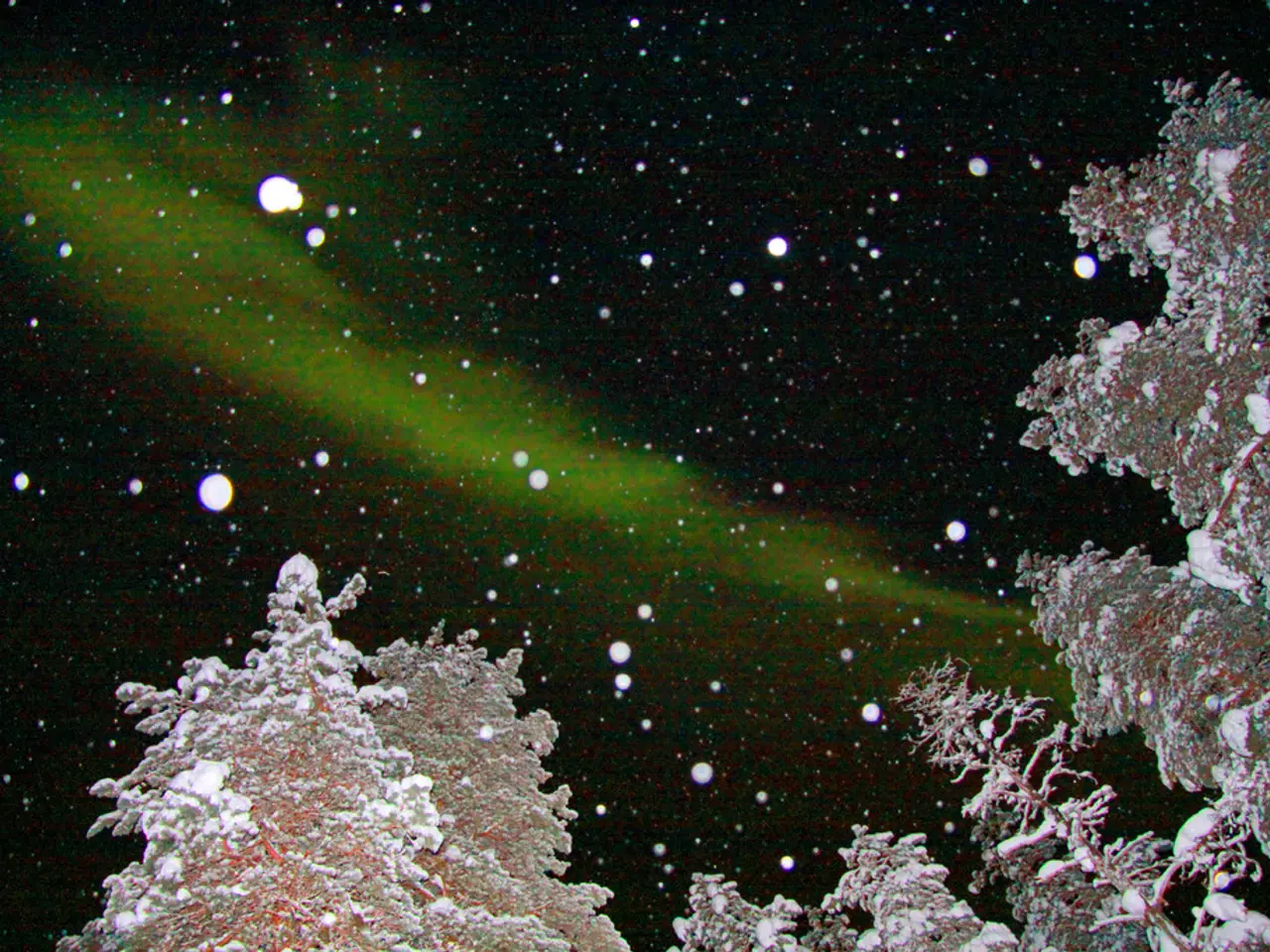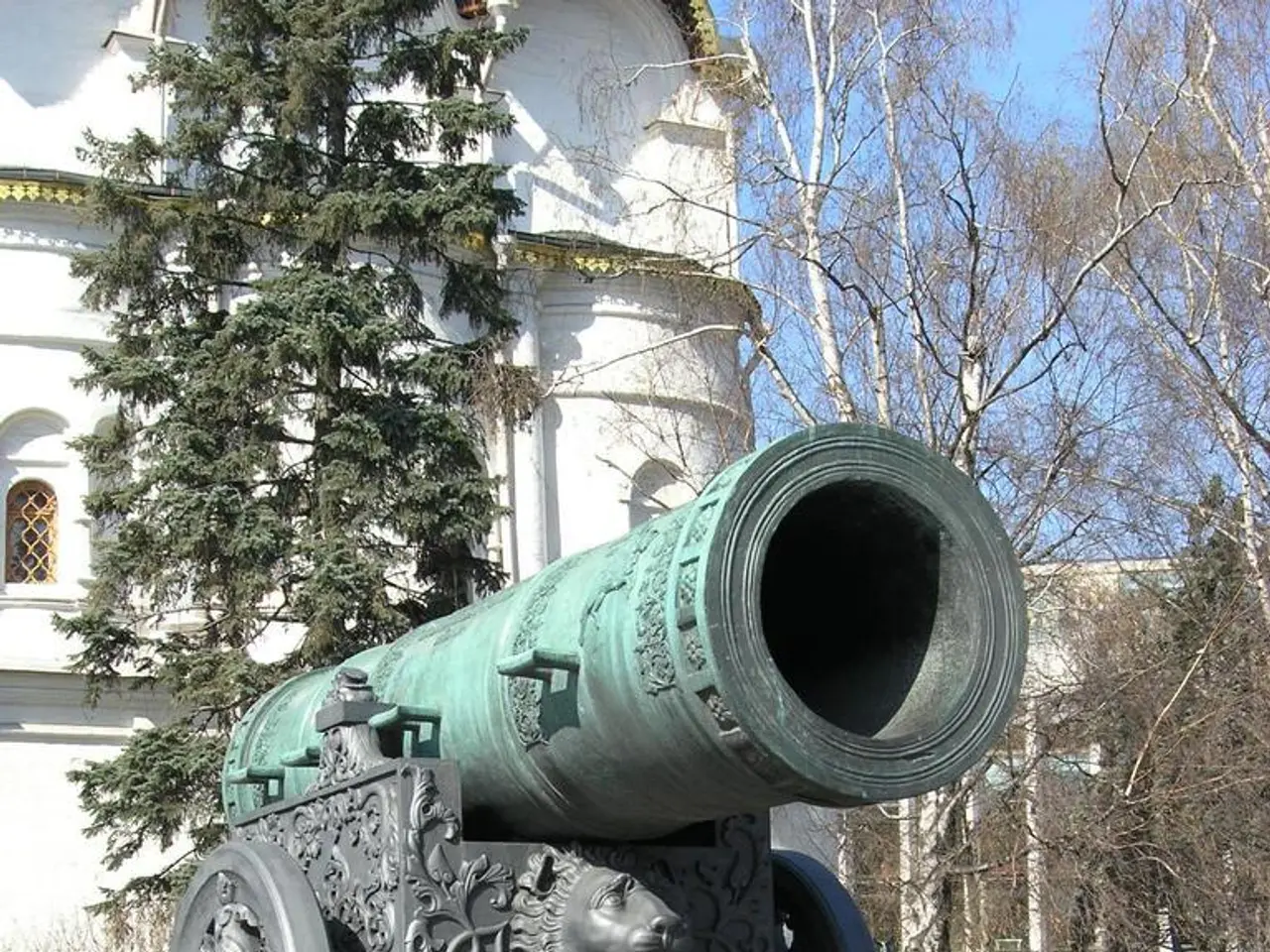Winter variability in the Northeastern region, revealed through snow cover patterns.
In the picturesque White Mountains of New Hampshire, community scientists are joining forces with organisations like the Appalachian Mountain Club (AMC) and the National Weather Service (NWS) to combat the unpredictable nature of winter weather caused by climate change.
Climate change is having a significant impact on New Hampshire's mountains, particularly during the winter season. According to the state climatologist, while New Hampshire's weather is naturally variable, climate change is intensifying extreme patterns: winters are becoming less predictable, with hotter, wetter, and sometimes drier conditions than in the past. This means that while there can still be cold, snowy winters, the reliability and duration of consistent snowpack are decreasing.
Recent years have shown that winter weather is now more variable, with warm spells delaying ski season openings and sustained cold arriving later in the season. For instance, during the 2024–2025 winter, a warm November pushed back openings at many ski areas until late December, though sustained cold and snow from late December through March led to strong visitor numbers and a 3% increase in ski slope visits compared to the previous year. This demonstrates that, despite the challenges posed by climate variability, good snow years can still drive robust outdoor recreation activity—but such years may become less reliable.
Impacts of climate change on the region are likely to include reduced snow reliability, shorter winter seasons, increased reliance on snowmaking, more extreme weather events, and an impact on the economy and tourism. Warmer temperatures and less predictable precipitation make it harder for ski resorts and other winter recreation operators to count on consistent snow conditions. Delayed starts and earlier thaws can compress the traditional winter recreation season, affecting not only skiing and snowboarding but also snowshoeing, ice climbing, and snowmobiling. Resorts are investing more in snowmaking and infrastructure to hedge against variable weather, but this can be costly and may not fully compensate for poor natural snow years.
Expect more instances of heavy precipitation, rapid melts, and temperature swings, which can disrupt scheduled activities and create safety hazards for outdoor enthusiasts. The outdoor recreation industry is a significant driver of New Hampshire's economy, and unstable weather patterns threaten the livelihoods of those reliant on winter sports and tourism.
To combat these challenges, AMC's Research Department has partnered with the NWS in Gray, Maine, to update and expand snow data monitoring equipment and protocols in the White Mountains. The data collected by AMC hut caretakers and the National Weather Service are all publicly available at the National Centers for Environmental Information. AMC's hut caretakers are providing essential data for improving mountain forecasting models by collecting and observing snow samples at several high-mountain huts, including Lonesome Lake Hut.
Snow monitoring equipment has been installed at AMC's Carter Notch, Lonesome Lake, and Zealand Falls Huts for the winter season. Caretakers will record four measurements each day: new snowfall, snowpack, snow water equivalent, and 24-hour maximum and minimum temperatures. Understanding the water equivalent in snow and the volume of water that makes its way down mountains, into rivers, and through towns is essential for preparing for spring, managing flooding, predicting drought, and creating hydroelectric power.
Changes in snowpack and snowmelt can have many cascading effects on ecosystems in the Northeast, particularly affecting the water cycle, animal and soil insulation, and stream water quality and runoff. Initial research using citizen science data in the mountains of the western United States has shown that adding volunteer observations provides a more accurate forecasting model when added to the NWS snow plot data set.
A new paper co-authored by Sarah Nelson, AMC's director of research, indicates that we stand to lose one to two more months of winter conditions, depending on whether we take a high- or low-emissions pathway, through the end of the 21st century. Despite these challenges, community scientists and organisations like the AMC and NWS are working tirelessly to collect data and improve forecasting models, ensuring that New Hampshire's mountain winters remain a source of outdoor recreation and economic opportunity for generations to come.
- The unpredictable winter weather caused by climate change in New Hampshire's mountains is not only affecting the environment but also the economic opportunities, particularly the outdoor recreation industry reliant on winter sports and tourism.
- To address the challenges posed by climate change on winter weather, community scientists are collaborating with organizations like the Appalachian Mountain Club (AMC) and the National Weather Service (NWS) in environmental-science projects, such as monitoring snowpack and temperature at high-mountain huts in the White Mountains.








